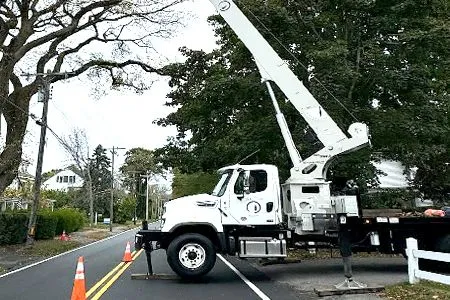5 Signs of a Dying Tree that You Shouldn’t Ignore

Even the healthiest-looking tree can suddenly start to experience issues that threaten its health and stability. If left unchecked, a dying tree can become a hazard to your property and safety. At JSK Tree Care, we can identify dying trees and safely remove them as necessary. Here are five signs that a tree may be dying.
Branches Are Dead or Falling
An excessive number of dead limbs, especially large ones, indicates trouble. Dead branches often appear dry, brittle, and lifeless. If you notice these branches falling more frequently, the tree may be unable to nourish its outer limbs, a clear sign of declining health.
Leaves Are Discolored or Sparse
Healthy trees produce vibrant, full foliage during their growing season. If a tree’s leaves are turning yellow, brown, or black at unusual times, it may be struggling to circulate nutrients and water. Sparse leaf growth or entire sections of the tree lacking foliage can also indicate a serious problem.
Bark Is Cracked or Peeling
The bark of a healthy tree acts as a protective layer, shielding it from environmental stress and pests. When a tree begins to die, its bark may crack, peel, or fall off entirely. Deep cracks or missing bark can leave the tree vulnerable to infections and infestations.
Trunk Shows Signs of Decay
A dying tree often exhibits visible signs of decay in its trunk. Look for cavities or mushrooms growing around the base of the tree. These are signs that internal rot is taking hold. Decay weakens the structural integrity of the tree, making it more susceptible to falling during storms or heavy winds. The presence of insects burrowing into the trunk can also indicate that the tree’s defenses are failing.
Roots Are Damaged or Exposed
The root system is the foundation of a tree’s health, anchoring it to the ground and providing essential nutrients and water. If a tree’s roots are exposed or decaying, the tree could be in serious decline. Signs of root problems include heaving soil, visible roots that appear rotten, and fungal growth near the base.
Tree Removal in Falmouth, MA
For
tree removal in Falmouth and the surrounding area, contact JSK Tree Care at
774-506-4655. We offer expertise in both residential and commercial tree services in Falmouth. Feel free to give us a call to arrange an arborist estimate in Falmouth, MA!


